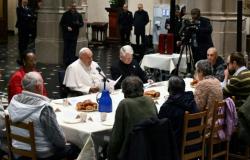Twitter 0
WhatsApp
Facebook 0
Messenger
Aziz Daouda has just taken a family getaway to Azemmour, a town next to the Atlantic mouth of Oum R’bia and living in the shadow of El Jadida. In an article published on “Bluwr.com”, he gives us his feelings.
A true tale of “facts” that we reproduce with the kind agreement of the author.
By: Aziz DAOUDA
Going towards Oualidia, just to enjoy its beautiful lagoon, its oysters and fish, my daughter, my wife and I decided to make a short stop at Azemmour. I promised myself I would take my daughter there at the first opportunity that presented itself.
We are here a stone’s throw from Casablanca, a handful of kilometers from El-Jadida and not far from Jorf Lasfar, a pride of modern Morocco’s industrialization.
I personally have a little something for this city. Few cities are so captivating. I cannot explain why.
Very quickly you are there sometimes Berber in short Jellaba, tchamir and slippers with rounded or pointed heads; sometimes a Phoenician draped in white, a bit like the Greeks dressed in their time of glory; sometimes wearing the toga of a proud Roman citizen or the blue turban of a rough Berghouata.
You imagine the Portuguese singing of their triumph at the capture of the city. You hear the sound of your footsteps on aged pavement, evoking that of the Saadian army regaining possession of the ramparts. The noise and vociferations of the soldiers resonate there again and again; but in silence.
At the turn of an alley in the ancient city, you hear the distant and confused voice of Sidi Abderahman El Mejdoub, crying out his pain in the face of evil, questioning the world and the universe. Around the corner, the barely perceptible whispering voice of Rabbi Abraham Moul Ness and his prayers at dawn and dusk call out to you. Sidi Brahim for Muslims… the two religions struggle to establish boundaries here…
Moreover, it was a sort of miracle which revealed to the two communities that Abraham was indeed a saint…The citizens had just installed a mill right in front of the cave where he spent his time meditating and praying…The beasts which who kept the mill running quickly fell ill and died one after the other. We then understood that Abraham did not want to be disturbed in his meditation… since then he has been Rabbi Abraham for the Jews, Sidi Brahim for the Muslims, saint for both.
Further into the town, there are rather silent young people, certainly looking worried, with a sad look in their eyes, who face you at the turn of an alley. Some of those who pass you have a surprisingly haggard look, as if to express weariness or disgust; maybe even deep anger and repeated hurt. At the corner of the street opposite, in a small misshapen square, it is the jerky sound of a loom that calls out to you. One of the few Deraz still in operation weaves scarves and scarves in wool or silk like every day… Tourists like it but don’t come often… He never gets tired of it. He works, loves his job very much and is waiting for better days or at least for the war in the Middle East to stop… Deep down, he must hope that his Israeli friends come to their senses and quickly remove their leaders from power. current; neurotics thirsty for blood more than anything else. He is waiting for Moussem but does not know if the Jewish Moroccans who return annually for the pilgrimage would still be numerous.
The craftsman’s house is silent and also waits… It often waits for a small group to pass by to finally come to life a little, for an hour or two. The master craftsmen who stay there seem to watch time slip by. Their eyes are nostalgic for a near past, no doubt idealized, and for a more distant past full of wealth and power forever gone.
A lady of a certain age, without any embarrassment, dressed in pajamas that have seen some green and unripe ones, is there in front of her house on a stool, sitting. The door to his modest blue-painted home is wide open. The lady extends a little beyond the small dimensions of her stool. His gaze is empty. She does not notice our silhouettes and seems not to hear our involuntarily light footsteps, as if not to disturb history or stir up the anger of abandoned walls, of houses with bricked-up doors, those that time has knocked down and those that passively await the signal of the tumble of tired, thousand-year-old stones that no longer hold on to anything.
Behind the old doors of a few buildings still standing – and there are still many, thank God – and a few houses not yet locked with padlocks or fallen into the oblivion of time and humanity, we can see young girls busy to embroidery. There are not very many of them anymore who have a passion for this ancestral art specific to the city with its bright colors and its dragons. What are the dragons doing here other than recalling a past so distant that we cannot see its depth? By hearsay, some say that it was a Portuguese merchant who introduced this art within the walls of the city.
At the corner of a small square, of which there are many in the city, in front of a grocery store as small as it is untidy, stand idle young people. One of them necessarily resembles Mustapha Azemmouri, the one known as Esteban the Moor or even Estevanico. Maybe he even carries the genes. Without Estevanico, North America would never have been what it is today. What a destiny! Starting from such a country to determine the history of another on the other side of the Atlantic.
As you leave through one of the gates of the ancient city, you have a single thought: Azemmour is looking for a present that does not come. She is dying and is certainly dying.
Maybe she’s already dead.
Some time ago, Karim Boukhari, in an article said: “I visited Azemmour. A friend, originally from the town, warned me: be careful, he told me, it’s a dead town.
To see it, take a walk at the foot of the wall on the wadi side. An esplanade that my friend Zaki Semlali has developed with the few means at his disposal to breathe new life into this special relationship that the city has with Oum R’bia. Today, plastic is unfortunately more abundant than fish. Gone are the shad and the beautiful fleshy graylings… Certain sections of the wall and the houses flow towards the wadi like tears of the pain suffered.
The nostalgic Azemmour gazes at the Atlantic and watches helplessly as the waves crash in the distance…
I implore the Almighty so that this piece of our precious history can finally benefit from the attention of our leaders.
My daughter, my wife and I left sad, hurt deep in our souls but the sublime voice of Sanaa Marahati singing some poems written somewhere in the city makes us believe in a better future for Azemmour.
Aziz Daouda… in a few words
*Technical and Development Director of the African Athletics Confederation. Passionate about Morocco, passionate about Africa. Concerned about what is happening, stating my point of view when I have one. Humanist, I try to be, human I want to be. My story is closely linked to Moroccan and world athletics. I had the privilege of participating in the glory of my country.
Twitter 0
WhatsApp
Facebook 0
Messenger






